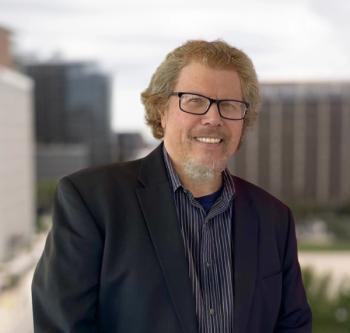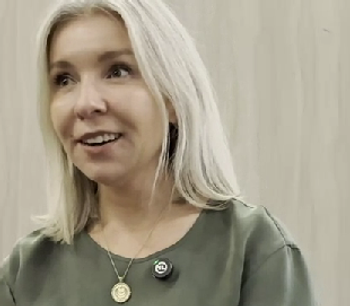
Updates From the National Academy of Sciences Conference on Adult ADHD
Check out these updates for the National Academy of Sciences Conference on adult ADHD, including new research, thoughtful discussions, and more!
CONFERENCE REPORTER
Tuesday, December 12 saw a historic meeting at the National Academy of Sciences addressing one of the nation’s most pressing mental health issues, the crisis in adult attention-deficit/hyperactivity disorder (ADHD).
Bringing together the nation’s researchers, educators, and clinicians, including representatives from the American Professional Society of ADHD and Related Disorders (APSARD), and individuals with lived experience from Children and Adults with Attention Deficit/Hyperactivity Disorder and the Attention Deficit Disorder Association; this meeting was held in conjunction with the Centers for Disease Control and Prevention, the US Food and Drug Administration (FDA), the Drug Enforcement Administration, and the Substance Abuse and Mental Health Services Administration.
Craig Surman, MD, from Massachusetts General Hospital began the conference with an excellent review of the consequences of untreated ADHD, including increased mortality rates, academic failure, economic disadvantage, and the need to promote equitable care for individuals with ADHD in disadvantaged populations and communities of color. The gene times environment interactions for genetic predisposition exacerbated among those from disadvantaged background highlighted the need for more equitable ADHD care within the health care ecosystem.
Ann C. Childress, MD, president of APSARD, presented data highlighting that adult ADHD is one of the most common mental health conditions in the United States with a prevalence of 4.4% in adults and 2.8% in seniors. In addition to being highly prevalent, Dr Childress cited information that untreated ADHD becomes progressively more fatal as comorbid conditions, such as depression, anxiety, insomnia, and substance abuse, begin stacking on top of the progressively devastating consequences of untreated ADHD. The mortality rate for ADHD is 150% times the general population, ADHD with 1 associated comorbid condition is 450%, and with 2 comorbidities is staggeringly 850% that of the general population.
A hot off the press study conducted by Drs Childress and Mattingly, in conjunction with APSARD and CHADD, surveyed hundreds of individuals with ADHD and hundreds of clinicians caring for ADHD, highlighting dramatic gaps in care. Over half of adults diagnosed with ADHD stated they were currently receiving no ADHD treatment. Primary barriers listed by both patients and clinicians included cost and insurance created barriers, both of which were accentuated by this past year’s ADHD crisis and medication shortages, which further fragmented the pre-existing barriers in the ADHD health care ecosystem. This study highlighted that despite widespread usage of stimulants, only 23% of patients stated that they were fully satisfied with their current stimulant treatment. Over half of adults with ADHD stated that they were still experiencing difficulties with driving, difficulty with interpersonal relationships, difficulty with intimate relationships, and difficulty with financial insecurity associated with living with ADHD.
Tamara Rosier, PhD, an ADHD coach with lived ADHD experience, discussed the level of “shame they carry as exhausting” and highlighted, that we are still “missing so many adults” due to inequitable access to care. The ongoing struggle of living with ADHD was further highlighted by J. Russell Ramsey, PhD, who helped cofound the University of Pennsylvania adult ADHD program. Dr Ramsey struck a chord with the panel when he commented “that adults with ADHD are working twice as hard for half the results.”
Margaret Sibley, PhD, from the University of Washington reviewed data on the overlapping cognitive symptoms of adults with and without ADHD. Noting that the average adult has 3 symptoms of ADHD without any actual diagnosis, she highlighted the need for careful clinical assessment beyond just treating a chief complaint of attention or cognitive difficulties. She pointed out that ADHD symptoms often become increasingly elevated, in that such symptoms not only cause functional impairment, but are exacerbated by damaged self-esteem and altered self-image.
In addition, Dr Sibley highlighted the lack of equitable NIH research funding for adult ADHD research. Despite affecting a larger total number of adults than children, the NIH is estimated to spend $78 million on pediatric ADHD research as compared to only $5.5 million for ADHD research in adults, an amount that is approximately 10% of the $650 million spent by the NIH on depression research.
David Goodman, MD, APSARD secretary and assistant clinical professor at Johns Hopkins University, then gave a thorough review of the impact of ADHD medications which have been developed for children, adolescents, and adults. He reviewed the role of various formulations of methylphenidate and amphetamine molecules and then highlighted the role of nonstimulant options, including sustained release clonidine and guanfacine in children, atomoxetine in children and adults, and the more recent FDA approval of viloxazine XR for both children and adults with ADHD. Dr Goodman then reviewed the impressive body of literature from studies around the world that showed the improved functional outcomes of adults when appropriately diagnosed and treated for ADHD.
This was followed by 2 robust panel discussions highlighting the increased understanding of the role of the prefrontal cortex and associated neural networks in individuals with ADHD. Amy Arnsten, PhD, from Yale led an insightful discussion of novel ADHD compounds in discovery, including Otsuka‘s centanafadine, which recently reported positive trials for both adults and children with ADHD, along with a recent positive double blind trial for solriamfetol in adults. Novel pathways, including metabotropic glutamate modulation, nicotinic 7 receptors, cortisol releasing hormone antagonists, and D1 receptor partial agonists were all discussed as potential future ADHD treatment options.
Day 1 ended with a robust discussion of this past year’s crisis in ADHD care and the dramatic impact on patients, clinicians, and our entire mental health care ecosystem.
Join in tomorrow for another late breaking update on day 2 from the National Academy of Sciences update on adult ADHD.
Dr Mattingly is associate clinical professor at Washington University; president of the Midwest Research Group; and president elect of the American Professional Society for ADHD and Related Disorders.
Newsletter
Receive trusted psychiatric news, expert analysis, and clinical insights — subscribe today to support your practice and your patients.

















